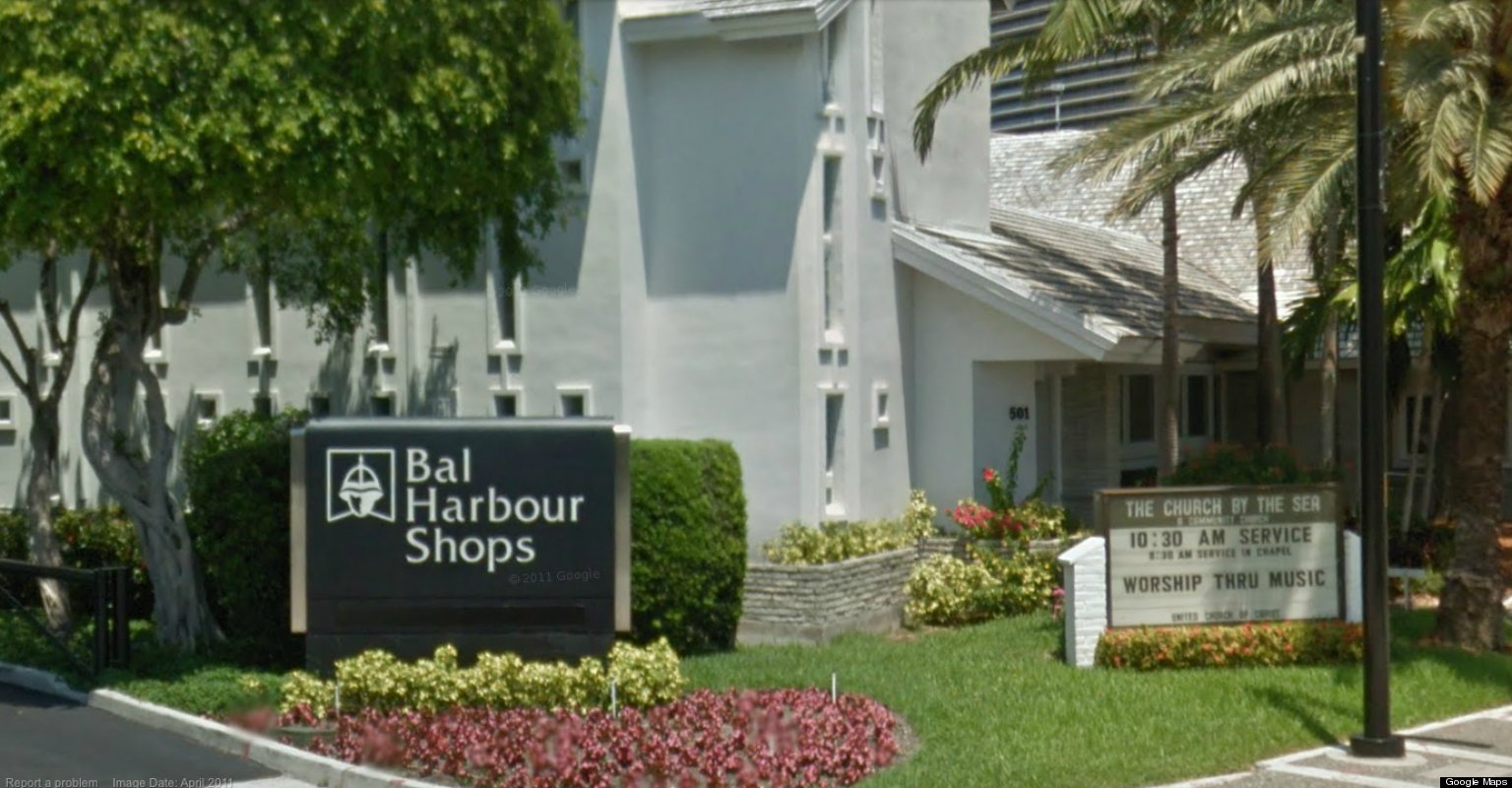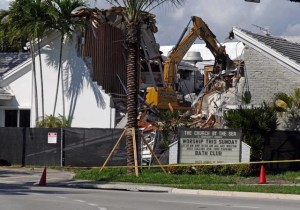
Homeless in Miami: The Church by the Sea
MIAMI – We live in a city where you don’t have to be a pauper to be homeless. Even a church can find itself without a home. This is the story.
“Demolition begins on Church by the Sea,” the headline in the Miami Herald read.
In this city, you get so used to reading about buildings that have stood for decades biting the dust to make way for our local deity — Development — that I almost dismissed the item.

Moreover, churches are not my favorite places. I was annoyed and inconvenienced when old and familiar dive bars began to disappear one by one: Bushwhacker, the Taurus, Tobacco Road, Fox’s. A church? Not really an institution whose passing I would normally mourn. I stand
with the late Christopher Hitchens on at least one thing (the thesis of one of his last books, titled “God Is Not Great”) as well as the slew of writers, from Sigmund Freud (“The Future of an Illusion”) to the contemporary biologist Richard Dawkins, who are staunch non-believers.
Fortunately, before I tossed the paper, I gave the article a second reading. I discovered a story much more poignant and illustrative than my atheist heart would have imagined.
The Church by the Sea is the oldest building in Bal Harbour. It has stood for seventy years, two decades longer than the luxury shopping center that has bought the property in order to have it demolished to make way for more stores that sell things 95 percent of Americans could never afford.
Such is a life in the Unequal Society, quite the opposite from the Affluent Society of widely shared middle class comfort that social scientists of the 1960s imagined.
More than most metropolitan areas, South Florida has almost always been ready to sacrifice things that cannot be monetized. Trivial things like history. Like tradition. Like distinguished architecture. Like the irreplaceable view of the ocean. Anything to satisfy the insatiable desires of Development, a deity that also goes by other names, such as free market capitalism, progress, and greed.

Several things especially touched me about this story in comparison with other cases featuring the triumph of Development over higher values. One is that what is being sacrificed on the altar of profit here is the attachment of a community of faith and fellowship to a particular place. That’s powerful.
Another is the fact that the destruction is taking place during Christmas, the holiest time of the year for the members of the congregation. It doesn’t matter that I no longer share the faith. I was raised a Christian and I recognize what this amounts to. A travesty. A profanation. A wound. For what? In order to sell a few more baubles.
The members of the church are understandably upset. Brian Mulheren, a Bal Harbour resident who over the years has attended funerals and other events at the church, told the Herald: “It’s really just a shame. It’s crazy that they would go ahead at Christmas time — a religious time of year — and start demolishing a historic church. What a Christmas gift for the residents of Bal Harbour and the congregants. It’s ludicrous.”
Some members of the congregation are not content with just complaining. According to the Herald, “Lynne Bloch-Mullen, 89, who had sued in hopes of blocking demolition, said she isn’t giving up. Bloch-Mullen, a church member for the past 17 years, said she and others are talking with attorneys about a stipulation in the property’s deed that only a church can be built on the site.
‘“We have no home, we have no place to anticipate having a home,’” she said. ‘“On Christmas Eve and Christmas Day we will be marching around the empty lot with signs. We may be going to jail.’”
Then there are a couple of other reasons this deal outrages me. I was once invited to give a talk on race relations in Miami at that church. The pastor, who happened to be a woman, could not have been more gracious nor the congregation more welcoming. I also noticed the building’s architecture, which was in stark contrast with the mediocrity of the surrounding buildings. It was a great edifice. It was only upon reading the recent Herald article that I learned that it was the work of two prominent Miami architects. They were not just prominent; they were really good.
Short of Dickens, this is about as sad and sorry as a Christmas tale gets. The values professed by the founder of the religion are turned on their head when a church, a congregation, and an architectural gem are destroyed for the benefit of those who would have no better luck getting through the eye of a needle than a camel.

